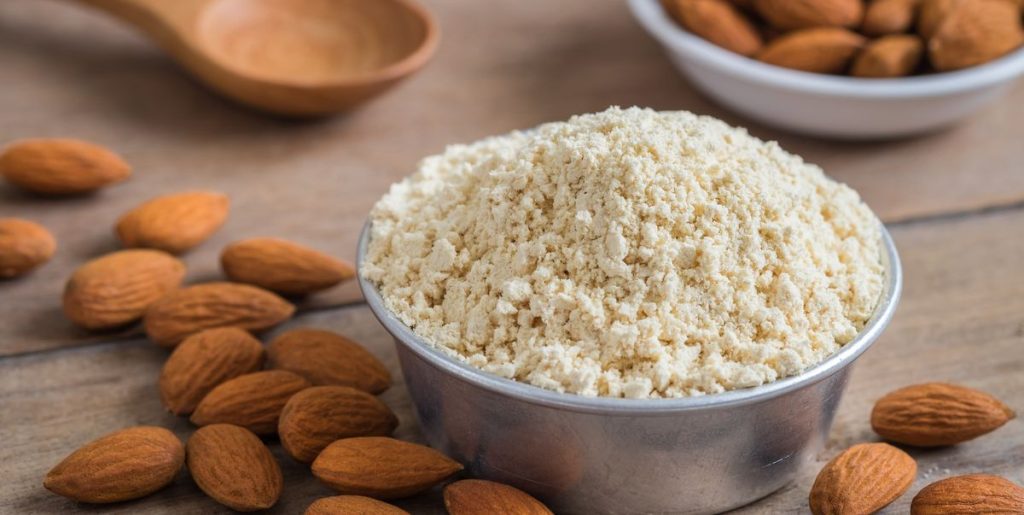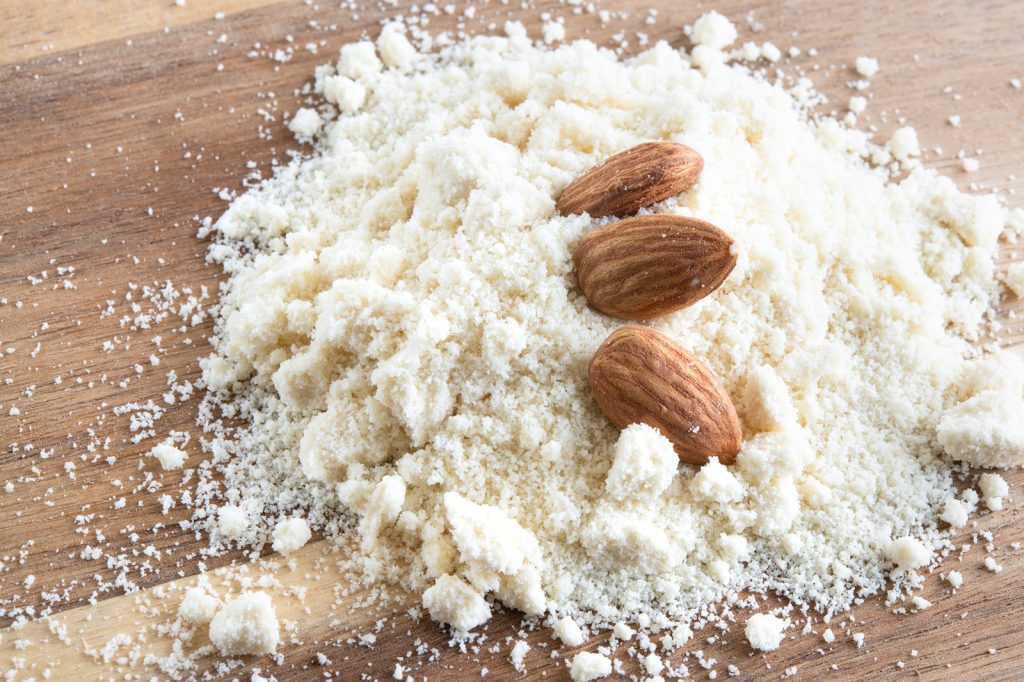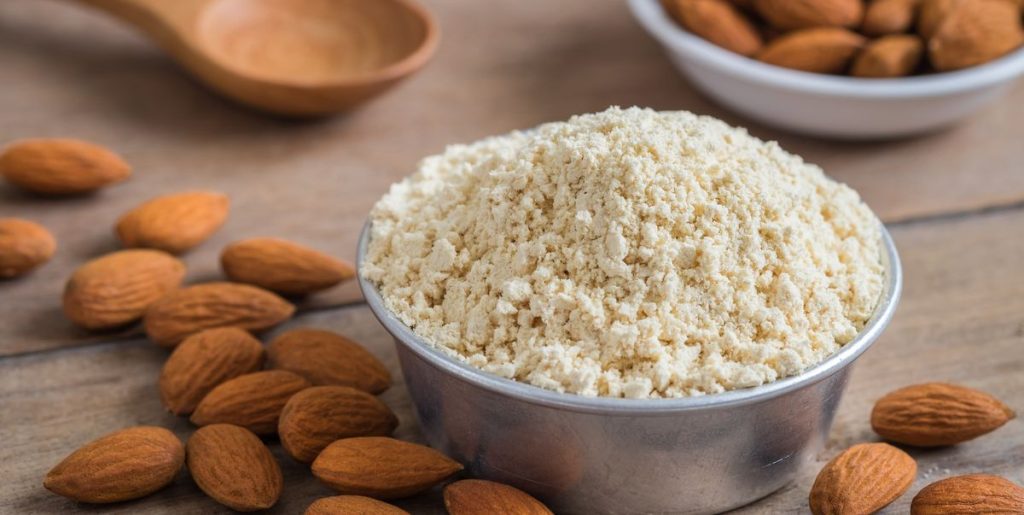Have you ever been curious about almond flour? Do you wonder if it tastes like almonds? If so, then this blog post is for you! Today we’re exploring the unique flavor of almond flour and why it’s become a popular baking ingredient.

Table of Contents
What Is Almond Flour?
Almond flour is made from blanched almonds that have been ground into a fine powder. It has a slightly sweet taste and contains more protein and healthy fats than traditional wheat flour.
Almond flour is naturally gluten-free, so it’s often used in recipes for people with gluten sensitivities or allergies. It’s also becoming increasingly popular with Paleo dieters, as it fits their grain-free dietary restrictions.
Does Almond Flour Taste Like Almonds?
The short answer is yes—almond flour does taste like almonds! However, the flavor isn’t quite as strong as you might expect.
That’s because most of the oils that contribute to a nut’s flavor are removed during the blanching process (the same one that removes the skin). So while almond flour still has an unmistakable nutty taste, it’s much milder than what you would get from whole almonds. This makes almond flour an excellent choice for baked goods such as cakes, cookies, and muffins where you want a hint of nuttiness without overpowering other flavors.
How Can I Use Almond Flour In Recipes?
Almond flour can be used in place of all-purpose wheat flours in many recipes. When baking with almond flour, keep in mind that it doesn’t behave exactly like regular wheat flours; since there are no gluten proteins present to help give structure to the dough or batter, your recipes will require additional binders such as eggs or chia seeds to help them hold their shape when baking.
Additionally, since almond flour absorbs liquid more readily than wheat flours do, you may need to decrease the amount of liquid called for in your recipe by up to 25%. With these adjustments in mind, however, almond flour can be easily incorporated into practically any recipe!
Read more:
What To Eat With Rye Bread? Is Rye Bread Healthy To Eat?
What’s The Difference Between The Panera Bread Bowl And Cup?
FAQs
How many calories in one cup of flour?
One cup of all-purpose flour (128 grams) contains 455 calories.
It also contains 12.6 grams of protein, 3.3 grams of fat, and 94.4 grams of carbohydrates, including 2.2 grams of dietary fiber and 0.9 grams of sugar.
Flour is a good source of several vitamins and minerals, most notably iron and vitamin B1. It also contains small amounts of magnesium, calcium, zinc, copper, manganese, phosphorous, and selenium. However, flour is not a significant source of vitamins A or C.
Flour can be made from various grains like wheat, oats, rye or spelt. Depending on the type of grain used, the nutritional content may vary. For instance, whole wheat flour contains more fiber and protein than all-purpose flour. As such, it is important to read the labels carefully when buying any type of flour in order to get an accurate understanding of its nutritional value.
In addition, it is also important to note that the calorie content of flour may vary based on the preparation method. For instance, cooking or baking with flour can increase its calorie content. As such, it is best to consult an expert if you are looking for specific nutritional information about a particular type of flour.
Overall, one cup of all-purpose flour contains 455 calories and is a good source of several vitamins and minerals. However, it is important to read the labels carefully in order to determine its exact nutritional content and to consider how preparation may affect its calorie content.
What happens if you eat bad almond flour?
If the foodborne illness is contracted from eating bad almond flour, then symptoms may range from mild to severe. Mild cases may include nausea and vomiting, while more serious cases can lead to diarrhea, fever, and abdominal cramps.
In extreme instances, hospitalization may be necessary as the infection can cause dehydration and other complications. It’s important to seek medical attention if symptoms persist or worsen.
Additionally, in some cases, food poisoning can cause long-term health problems such as joint pain and arthritis. Therefore, it is important to take the necessary precautions when consuming almond flour to avoid any potential risks of foodborne illness or other health issues.
It is also possible that eating bad almond flour may contain harmful bacteria, such as Salmonella or E. coli, which can cause food poisoning if ingested. Eating bad almond flour can also increase the risk of contamination with other bacteria, fungi, and parasites that may not be killed by cooking. As such, it is important to always check the best before dates on any almond flour product and properly store it in a cool, dry place.

It is also important to note that almond flour should not be consumed raw due to the risk of contamination and foodborne illness. Always cook any product containing almond flour thoroughly before consuming. Following safety guidelines such as these can help reduce the risk of food poisoning or other health issues from bad almond flour.
Ultimately, it is necessary to take the proper precautions when handling and consuming almond flour in order to avoid any potential risks of food poisoning or other health complications. Eating bad almond flour can be dangerous, so always make sure to check best before dates and store products properly prior to consumption. Furthermore, always ensure that any product containing almond flour is cooked thoroughly before consuming, as eating raw almond flour can increase the risk of foodborne illness. By taking these simple steps, you can help ensure that your consumption of almond flour is safe and healthy.
Conclusion
Whether you’re looking for a healthier alternative to traditional wheat flours or just want to enjoy the subtle flavor of almonds in your favorite baked goods, almond flour could be just what you’re looking for! Does almond flour taste like almonds? Yes—but its flavor is far subtler than what you’d get from whole nuts due to its lack of oils. Ready to try baking with almond flour? Keep these tips in mind and enjoy exploring this unique ingredient!
References:









